Blogging Resources
Below you will find some helpful information on how to get started with blogging and what type of equipment I use. This page contains affiliate links through Amazon Associates.
When I first started blogging in 2012, I had no idea where to start or how to get everything set up. Luckily, I was able to figure things out with the help of fellow bloggers and through resources I found online. Below you will find a list of resources and tips that I’ve used and/or continue to use in order to successfully manage my blog.
Please note, some of the links below are affiliate links that I will earn a commission from if you purchase through those links.
Hosting
Bluehost – When I first moved over to WordPress in late 2012, I hosted my website through Bluehost. Bluehost offers affordable, shared hosting plans that are great for beginners but as your blog grows, you’ll want to switch over to a non-shared hosting plan, such as a VPS (virtual private server). A VPS can handle increased pageviews and spikes in traffic.
Grits Design Hosting – Robin from Grits Design is great to work with! She works with a ton of food bloggers, offering hosting and maintenance services at an affordable price. My hosting and maintenance is through Grits.
Themes, Framework and Tech Stuff
StudioPress Themes – Studiopress offers a variety of themes, making it easy for you to choose a theme that meets your website’s needs. Before I had a custom theme created, I used to use the Lifestyle Theme. In order to use the Lifestyle Theme, or any other Studiopress theme, you’ll need to run your site on the Genesis Framework.
Genesis Framework – The Genesis Framework is what This Gal Cooks is run on. Genesis comes packed with a ton of useful tools, can be easily customized and has built in SEO tools.
Custom Themes – If you’re willing to put forth the money, or if you’re one creative cookie, you can customize all of the Studiopress themes. Before I had a custom theme developed by Purr Design, I created my own header and tweaked the Lifestyle Pro theme by editing the CSS.
Photography Tools
DSLR Camera – My first DSLR camera was the Canon Rebel T3. Up until October of 2014, I shot all of my photos using the T3. In October 2014, I upgraded to the Canon 6D. I also have a Canon SL2 that I use when I don’t feel like lugging around the heavier 6D.
Canon EF 50mm f1.8 Lens – When I first bought the Canon Rebel T3, I bought the Canon EF 50mm f1.8 lens. It’s economical and it works great in low light areas. If you’re an unexperienced photographer like I was (and still kinda am) I’d recommend using this lens until you get some practice with your camera and the lens.
Canon EF 50mm 1.4 Lens – I upgraded to this lens in early 2014. I use it for some shots that I am unable to achieve with the 100mm lens.
Canon EF 100mm f2.8 IS USM Macro Lens – This bad boy is the lens that I currently use for all of my shots. It has an image stabilizer which will prevent some of the blur that occurs from camera shake. 98% of my photos are shot using this lens.
Canon EF 24-70mm 2.8 L Lens – this lens is great for food photography and travel photography. The photo quality is excellent – sharp images and beautiful colors.
Adobe Lightroom – I edit all of my photos with Adobe Lightroom. I switched to Lightroom from Elements in early 2014 It’s also a lot cheaper than Photoshop and easier to learn!
Pic Monkey – I use Pic Monkey to add fonts to my photos and to create awesome little graphics. Pic Monkey is a free tool or $4.99 per month to gain access to their premium features.
Tasty Food Photography – This book by Lindsay from Pinch of Yum is a lifesaver. You’ll learn tips and tricks ranging from photo shoot setup to photo editing in Lightroom or Photoshop. Click here to view more details.
Reflectors – I made a simple reflector by wrapping aluminum foil around a canvas frame. The reflector is a great tool for directing light towards the subject of your photo.
